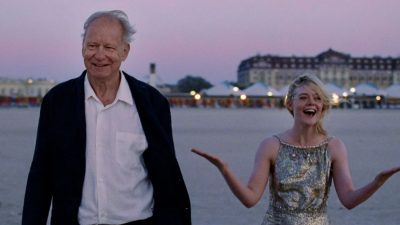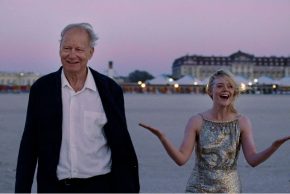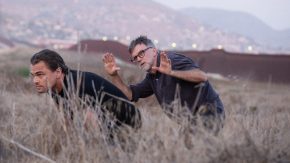It was once the centre of the world for Europeans – or is it still? This year, one of the most exciting capitals, Rome, will be linked to Budapest as part of the Bridging Europe programme. And through the Eternal City, also the whole of Italy, thanks to the fantastic Italian artists who will be performing at Müpa Budapest in September. Three different flavours, moods, and musical worlds will take to the stage, but what they all have in common is that for the few hours you listen to them, you will feel to be in Italy. But who are these musicians and what do they bring us?
INTERNATIONAL MUSIC IN ITALIAN: ROBERTA GAMBARINI
Born in Turin, Roberta Gambarini has come the furthest from her homeland, having lived in the United States for many years. In case you have read our interview with her, you’ll remember that the incredibly talented singer’s parents were already jazz fans and were in the midst of the mid-twentieth century club scene. It was Italian jazz musicians who first supported Gambarini in her career, which she then continued in the United States – on the side of mentors such as James Moody and Benny Carter.
Roberta Gambarini is often compared to Ella Fitzgerald, and like her great predecessor, she has her own “songbook” from which to compile the programme for each concert. Of course, as a representative of such a distinctly American, English-language genre, she sings mostly in English. This performance will be special, however, because it will feature songs from her repertoire that are less frequently sung in Italian, and even some that have been specially written for the occasion.
But whether she sings in Italian, English or any other language, it is worth remembering Gambarini’s words:
“You can play jazz with people even if you don’t speak each other’s language. Jazz can be an ultimate tool to unite and bring peace among the people in the world. It is extremely difficult in such a divided world we live now, but I firmly believe that if we are able to recuperate and revitalise this message, jazz can go very far.”
Isn’t this the whole point of Bridging Europe in the end?
MUSIC OF THE ITALIAN COUNTRYSIDE: ANTONIO CASTRIGNANÒ
In the south of Italy, including the province of Puglia, where Antonio Castrignanò comes from, music has a tradition that goes back thousands of years and reveals ancient secrets. For example, it is home to the pizzica, a ritual dance traditionally performed to heal victims bitten by tarantula spiders while being in terrible agony and an unconscious state.
However, wild rhythms and altered states of consciousness can also be good for all sorts of other “poisons” that make our daily lives miserable, whether it’s indifference, nervous rushing or burnout. The ritual, which was addressed to Dionysus in the first few centuries of the Roman Empire and then, with the spread of Christianity, to Saint Paul, is still alive and well today, inspiring new generations of young artists.
This was also the case with Castrignanò, who began by playing the folk music of Puglia, excitingly blending the unbridled pizzica with the slow, sad emotions of folk songs. He has ever since published five albums, and each time he pushes the boundaries a little further, linking his Puglian roots with the whole large world, and the folk music of the past with innovative, experimental musical ideas for the future.
“Traditional music marks the passing of man on earth with his ancestral musical codes that interweave with tales of present life and give them to the future man.”
– he said about his latest album, which will be played through as part of the Bridging Europe programme.
AND OF COURSE THE MUSIC OF ROME: THE ORCHESTRA OF THE SANTA CECILIA ACADEMY
In 1585, Pope Sixtus V issued a papal bull that established a musical institution in homage to two great predecessors – Pope Gregory the Great, who introduced sacred chant into the Mass, and St Cecilia, the patron saint of music. This was the birth of an orchestra which has been present in the history of Rome for the last four hundred years, witnessing great ecclesiastical and secular events, dramatic turns of events, but always surviving whatever happened. Initially a religious institution, it became a Royal Academy by the time of the unification of the Italian state, and since the end of the 19th century it has had a permanent orchestra, choir, library and museum, not to mention various schools for musicians, actors and filmmakers.
The orchestra, now led by Antonio Pappano, will soon perform in Budapest with the Cantemus Choir, and will be conducted by Iván Fischer. Accordingly, the repertoire is based on a dialogue between an Italian and a Hungarian composer. What do they have in common? What else but Rome itself…
Italian composer Ottorino Respighi moved to the capital from Bologna in 1913 to become a professor at the Santa Cecilia. The years that followed were a real emotional rollercoaster for him: at first he suffered from the hustle and bustle of the city and the responsibilities of teaching, then he saw Italy enter the Great War and spent some time in the army. He fell in love with a pupil, who later became his wife, and shortly afterwards his mother died. It was under the influence of all these hectic and ambivalent emotions that he sat down to write The Fountains of Rome, whose performace with Toscanini in 1918 was a huge success. Over the next decade, Respighi also wrote two sequels, Rome’s Pines and then Rome’s Feasts.
Franz Liszt’s Rome-inspired choral works might not be unknown to Hungarian audiences. O Roma Nobilis is a setting of a 10th century Latin pilgrim poem composed by Liszt in 1879, and Dall’alma Roma (From the Soul of Rome) is a transcription of the papal hymn in honour of Pius IX for voice and organ. Indeed, there are even aspects of Liszt’s life that link him to the Academy. It was in Rome that he met the young composer-pianist Giovanni Sgambati, who was his pupil and later became director of the Santa Cecilia.
“O Rome, my country”
– Liszt wrote in the 1860s about the city, quoting a famous line from Byron’s poem. And we can go with him to Rome, or even immerse ourselves in the linguistic, musical and cultural treasures of the whole of Italy, and the only thing we have to do is to visit such must-see concerts of Bridging Europe.

























Comments